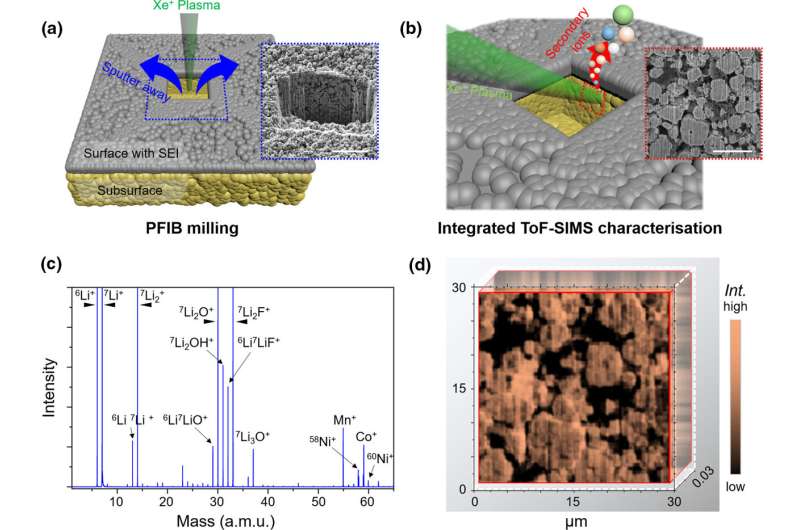
An international team of researchers has devised a method to detect the degradation mechanism of lithium-ion batteries.
Lithium-ion (Li-ion) batteries are seen as the great hope for the future of battery technology because of their immense potential for long-life cycles and energy density. However, degradation is one of Li-ion batteries’ toughest challenges. To eliminate the degradation and extend the lifespan, scientists need to figure out what causes IT in the first place.
In a paper published in Energy & Environmental Materials, the University of Surrey, together with TESCAN Brno, s.r.o. (a leading global supplier of scanning electron microscopes and related charged-particle beam instruments) and the Oak Ridge National Laboratory explain a new way to detect and investigate Li-ion’s degradation mechanisms.
The team used an integrated characterisation platform to directly observe inside the batteries’ electrodes. This platform is based on a dual-beam electron microscope, with the mass spectrum equipment attached to it.
Using the platform, the team was able to study the behavior of widely-used electrodes in Li-ion batteries (NMC cathode and graphite anode), and, for the first time ever, the team was able to observe degradation take place. These observations could scientists make improvements to the performance of Li-ion batteries can be improved in the future.
Dr. Yunlong Zhao, project co-lead from the University of Surrey, said: “If lithium-ion batteries are to meet their potential by playing an integral role in our day-to-day lives via a varied range of applications, the scientific community needs to identify and investigate the complex reactions during their degradation. Our method could be the building block that allows Li-ion batteries to improve energy density.”
Dr. Tan Sui, project co-lead from the University of Surrey, said: “Our team of talented scientists were driven by the prospect of developing a method that could someday allow Li-ion batteries to play a leading role in a greener planet. We are excited by what the future might bring.”
Battery parts can be recycled without crushing or melting
Xuhui Yao et al, Degradation Diagnostics from the Subsurface of Lithium‐Ion Battery Electrodes, ENERGY & ENVIRONMENTAL MATERIALS (2021). DOI: 10.1002/eem2.12221
Citation:
Diagnosing and tracking lithium-ion battery degradation (2021, September 9)
retrieved 9 September 2021
from https://techxplore.com/news/2021-09-tracking-lithium-ion-battery-degradation.html
This document is subject to copyright. Apart from any fair dealing for the purpose of private study or research, no
part may be reproduced without the written permission. The content is provided for information purposes only.
Stay connected with us on social media platform for instant update click here to join our Twitter, & Facebook
We are now on Telegram. Click here to join our channel (@TechiUpdate) and stay updated with the latest Technology headlines.
For all the latest Technology News Click Here
For the latest news and updates, follow us on Google News.
